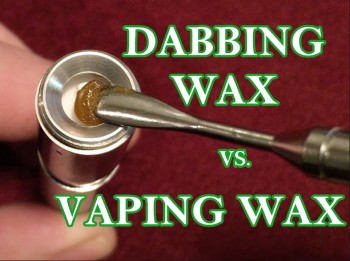
We will all experience some form of trauma at one point in our lives. This is simply a part of what it means to be alive. A traumatic event can range from something minor, like being left out of a group chat because someone doesn’t like you, or having a horrific accident or incident happen to you that shakes your core identity.
I included the “excluded from the chat group” as traumatic because for some people, a simple act of group rejection could severely painful and alter the identity of the person. This is ultimately the effect of trauma irrespective of the perceived degree of affliction. A traumatic event usually has a “before” and “after” element in relation to the sufferer’s behavior. For example, if you had a car accident you may feel fear creep up whenever someone is driving at a particular speed. This fear response is something that will inhibit you from engaging in activities where high speed is involved.
Similarly, being a victim of assault or robbery can alter your behavior to feel fearful when you leave your home, and thus limits your choices in activities based on this fear response.
Fortunately, evidence seems to suggest that cannabis is a solid treatment against trauma. The original study, conducted in Israel clinical trials to look at the efficacy of cannabis as a potential treatment option.
The results of the trial were considerably positive. Notably, a number of cannabis-medicated patients stopped or reduced their dosages of opioids (by 52%), anti-psychotics (by 36.9%), anti-epileptics (by 35.7%) and hypnotics and sedatives (by 35.3%). Overall, over two thirds of patients reported at least moderate improvement with no serious side effects, with 90.8% of treated PTSD patients being classified as therapeutic successes after six months.
Considering that the safety profile of cannabis is better than that of anti-psychotics and opioids, cannabis very well may be the first treatment that psychiatrists ought to consider when dealing with PTSD. The problem with the pharmaceutical approach to dealing with PTSD and anxiety is that often the side effects of the drugs are just as bad as the symptoms of their condition. Essentially, you trade one bad situation for another (hopefully) lesser bad situation. If cannabis is able to supplant a large portion of these pharmaceutical drugs, then perhaps the road to recovery could be quicker.
However, should cannabis be the first treatment option? Personally, I believe that we should have a protocol to deal with most illnesses and conditions. We should always strive for the least invasive strategy first, and then work our way up from there.
Start with the breath
Many times people go to psychiatrists with anxiety or depression and immediately get put on benzos and anti-depressants. This is the standard protocol for many health care professionals. However, why is this the standard?
There is empirical evidence to suggest that there are more holistic approaches that could potentially provide the “same results” as these pharmaceutical solutions. For example, Breathwork is a wonderful tool to manage stress and anxiety, to reduce pain and even reduce symptoms of depression. There’s a lot of studies that have shown that when you change the breath you change your state.
Therefore, shouldn’t we start with something as natural as the breath to deal with stress, anxiety and trauma release?
Fortunately, today we’re going to be talking a bit about this and how you can use cannabis in tandem with Breathwork to work on your traumas.
PLEASE NOTE: This isn’t medical advice. If you suffer from psychological issues such as PTSD, depression, etc – it’s best to do these kinds of exercises with the supervision of a mental healthcare professional. While it might be hard to find someone where you live, if you do the proper investigation and provide the protocols – a psychologist or psychiatrist might be willing to work with you. The reason you want to have the help of someone else is because they provide an objective analysis of your progress and can help interpret your trauma, internalize it and let go of the pain. If you have no one to help you, and this is your last resort – just continue with care, listen to your body…don’t push yourself too much either.
Now that that’s out of the way, let’s talk about a breathing pattern called “Transpersonal Breathwork”
Transpersonal Breathing – (Or commonly known as Holotropic Breathing TM)
Transpersonal Breathwork is a technique of breathing where you repeat a single pattern of breathing for a prolonged period. The technique is simple – a quick short inhalation into the diaphragm, then another burst of air into the chest, and then finally you simply release the breath as if you are sighing. People refer to this as 1-1-2 breathing. In other words, the first two breaths are short quick inhalations, and the exhale last for about twice the duration as the inhalation.
The link above shows you the technique with a 20 minute guided video. For deep trauma release, people typically breathe like this for an hour or more. Holotropic Breathing – invented by Stan Grof – has sessions that last up to three hours. However, those sessions need to be supervised since there can be wild manifestations of trauma.
However, if you are going to be doing this by yourself – start slow and build your way up. Each session you do, you’ll be releasing and processing trauma stuck in your body. This type of breathing is hard in the first five to ten minutes, but then the body adapts and you can breathe like this for a while.
After about 15-20 minutes, something strange starts happening – your emotions begin bubbling up and perhaps you break out in laughter or bawling your eyes out – but one thing is certain, you’ll be dealing with your emotions in every session.
This form of therapy is gaining in popularity and by mastering these kinds of techniques, everyone has at the very minimal some sense of dealing with traumatic events in their life – at the very least as a mechanism of release.
How does cannabis factor in?
Cannabis helps break negative feedback loops – it helps you from continually replaying the traumatic event. In order to use this effectively with Breathwork, you’ll want to periodically release the trauma via transpersonal breathing, and use cannabis in the same capacity you’d use anti-anxiety medication. By combining the two – cannabis and Breathwork – you have amazing tools to help you explore your internal traumas and release them from your mind and body.
If you have any questions about how to do this, you can reach out to me here and I’d be more than happy to help as I can.
CANNABIS AND BREATHE, READ MORE...
REDUCING ANXIETY WITH BREATHWORK AND MARIJUANA!








